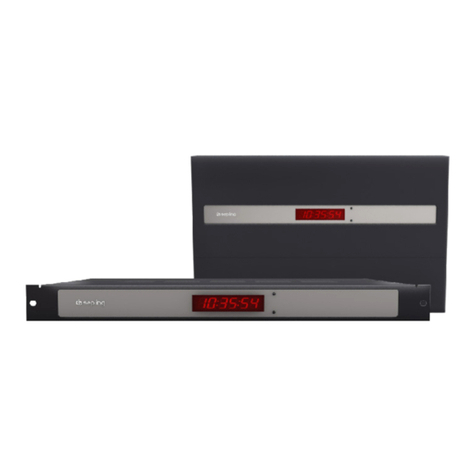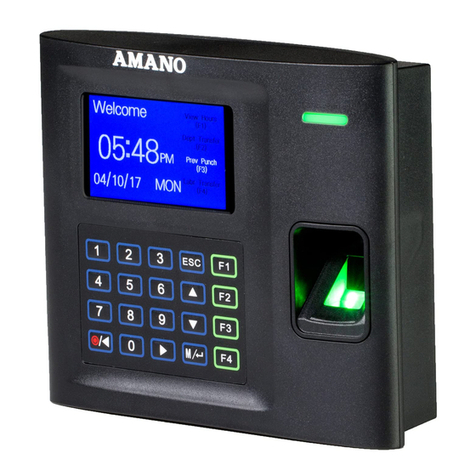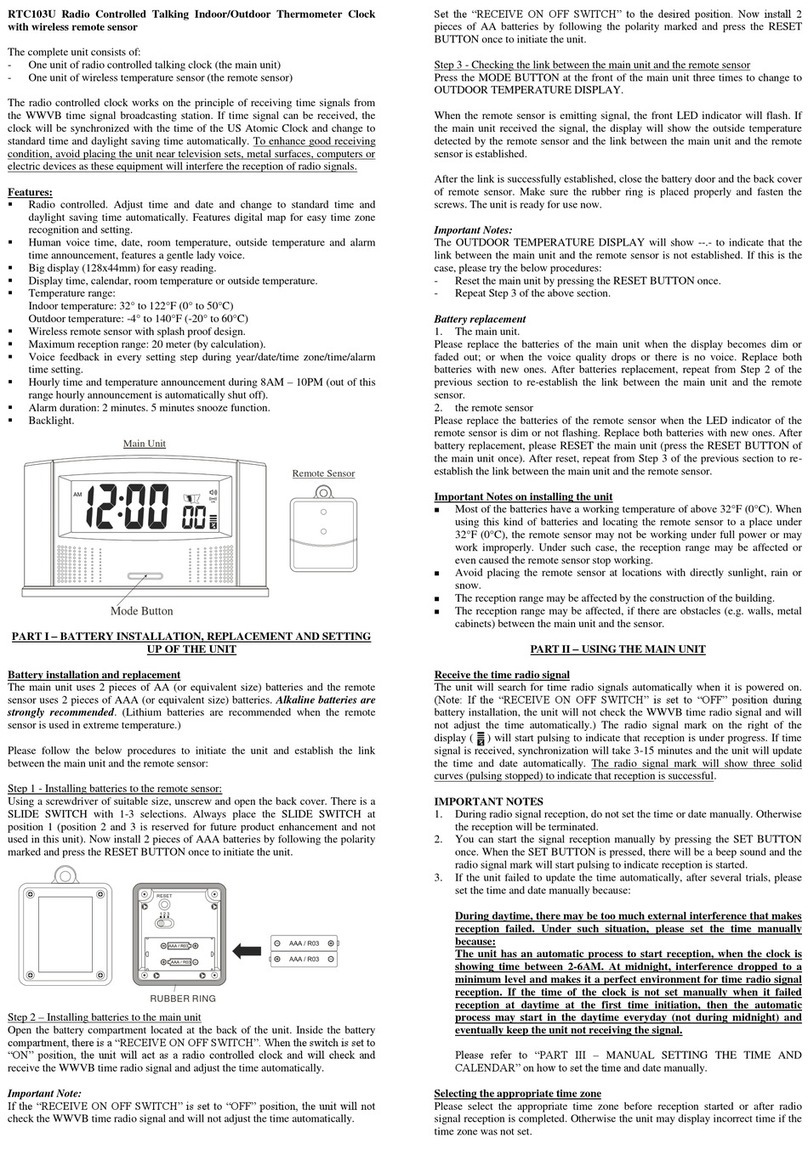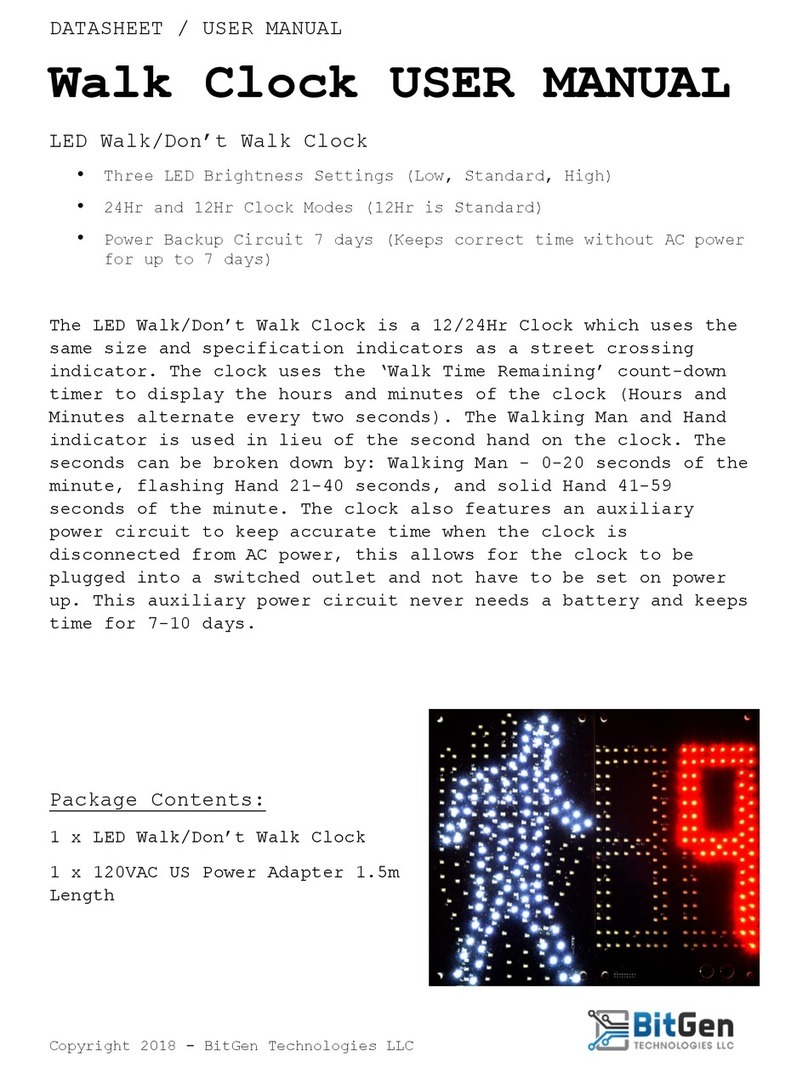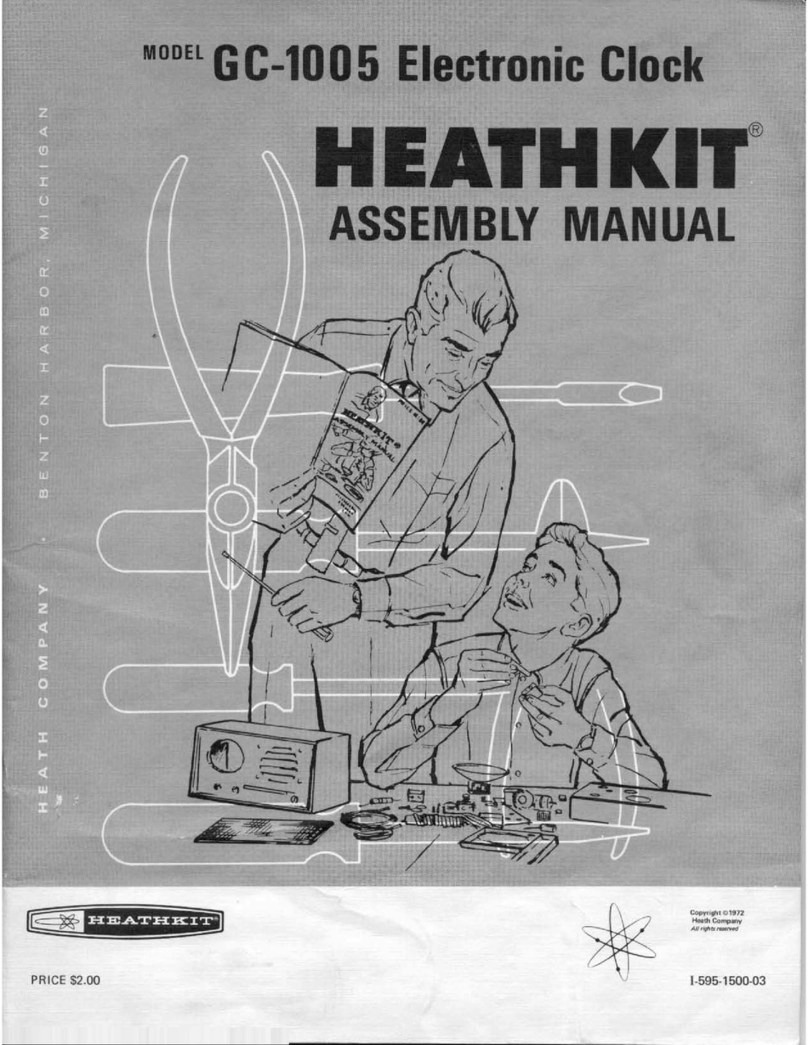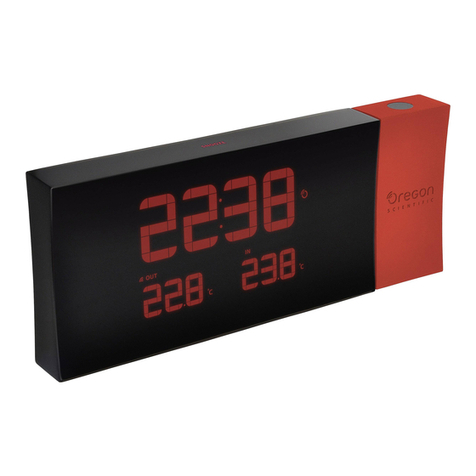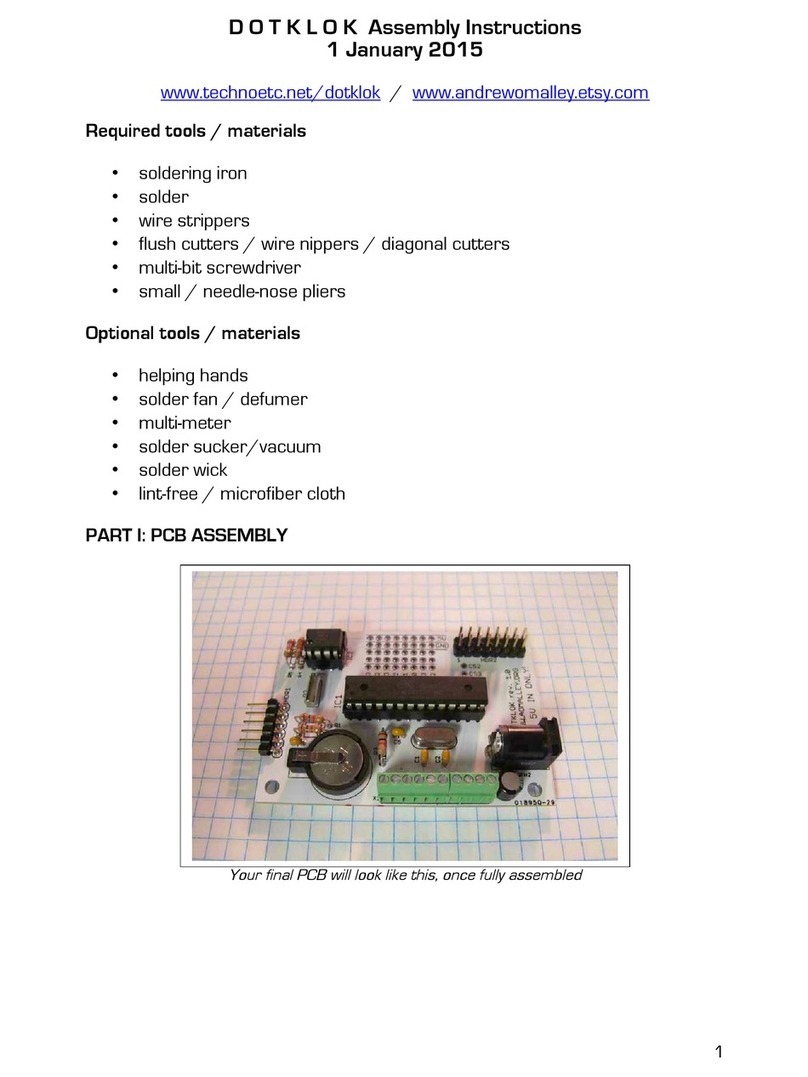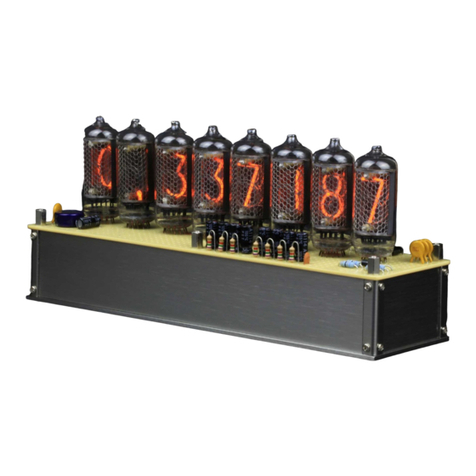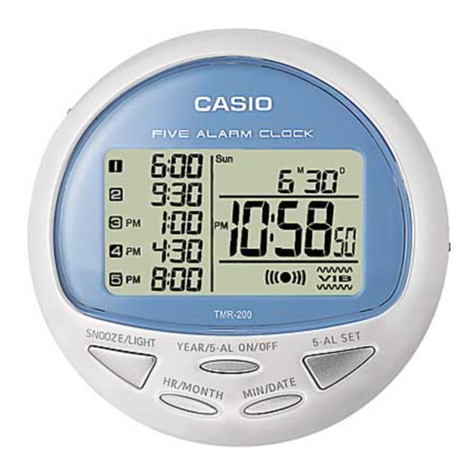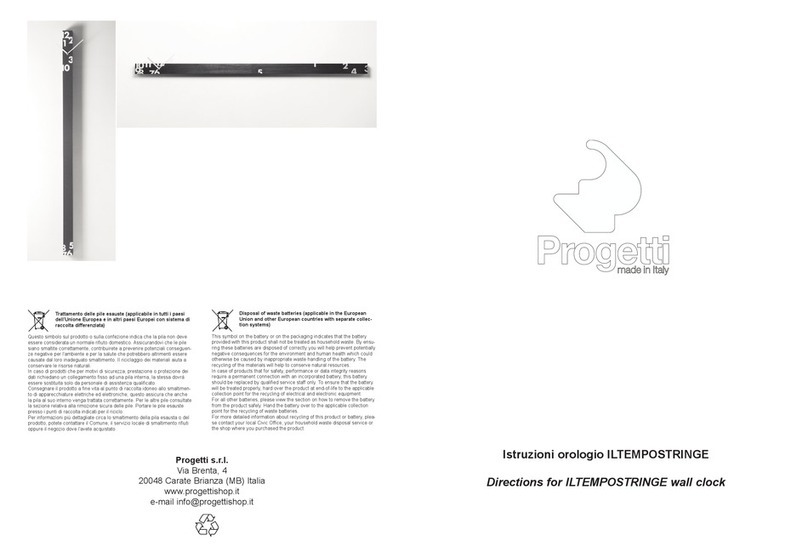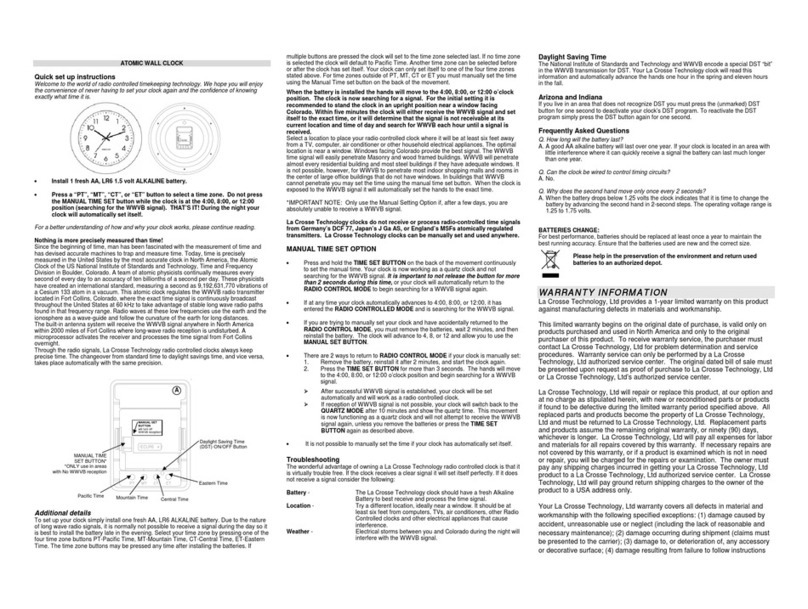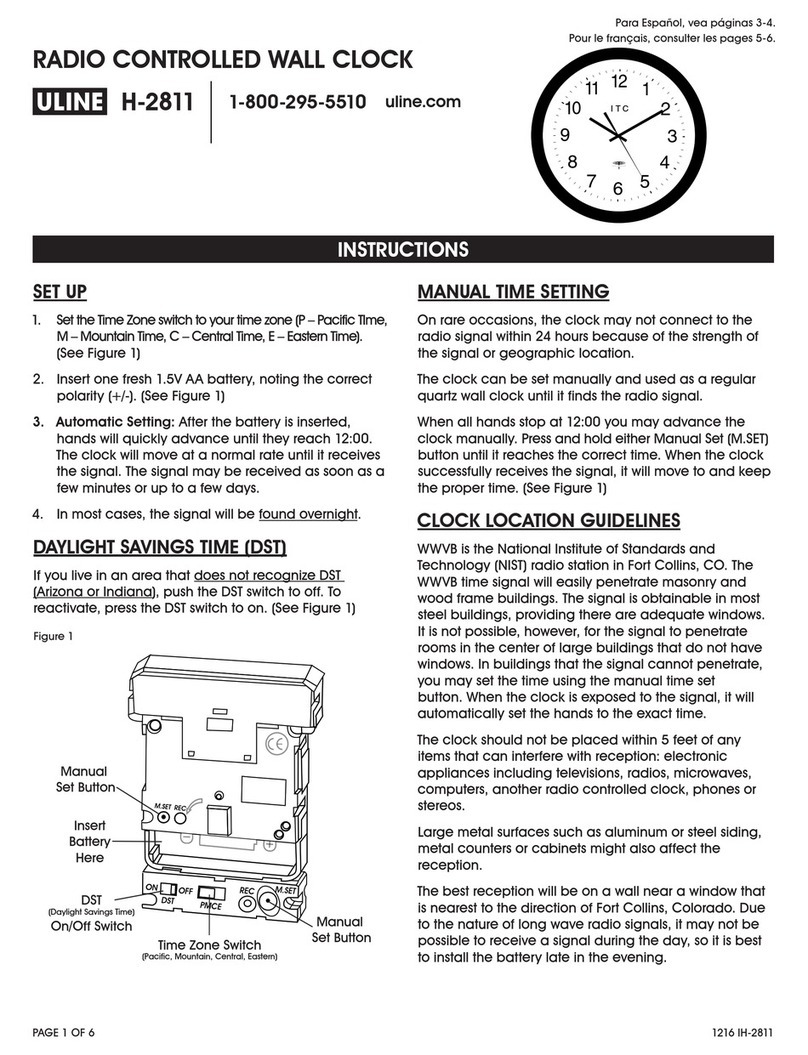
1. VORBEREITUNG
Entfernen Sie auf der Rückseite der Uhr den Sicherungspin des Laufwerks und den Klebe-
streifen über dem Batteriefach.
2. START / ERSTE SYNCHRONISATION
Legen Sie nun eine entsprechende Batterie (LR6 AA 1,5V) ein. Achten Sie auf die korrekte
Polung. Die Uhr beginnt nun selbständig die Zeit zu synchronisieren. Dies dauert etwa 3-8
Minuten, beginnend nachdem alle Zeiger auf 12 standen. Falls das Zeitsignal nicht empfan-
gen werden kann, beginnt die Funktion des Laufwerks bei der Einstellung 12:00 Uhr.
3. TÄGLICHE SYNCHRONISATION
Das ZACK Laufwerk empfängt zur täglichen Synchronisation 8x am Tag das Referenzzeit-
signal.
1:00 Uhr / 2:00 Uhr / 3:00 Uhr / 6:00 Uhr
Zu diesen Uhrzeiten stoppt der Sekundenzeiger auf der 12, während die Uhr das Synchro-
nisationssignal empfängt.
10:00 Uhr / 14:00 Uhr / 18:00 Uhr / 22:00 Uhr
Zu diesen Empfangszeiten stoppt der Sekundenzeiger nicht, sondern läuft, während die
Uhr das Synchronisationssignal empfängt, ganz normal weiter.
4. INTERNE SYNCHRONISATION
Nachdem sich die Uhr einmal korrekt mit dem Zeitsignal synchronisiert hat, wird die Uhr
eigenständig durch die interne CPU gesteuert.
Für den Sekundenzeiger wird die Synchronisation zu folgenden Zeiten ausgeführt:
1:30 Uhr / 5:30 Uhr / 9:30 Uhr / 13:30 Uhr / 17:30 Uhr / 21:30 Uhr
Für den Minutenzeiger wird die Synchronisation im Zeitraum 4:50 - 5:01 Uhr durchgeführt.
Bei schlechten Empfangsbedingungen oder Standorten außerhalb der Senderreichweite wird es Ihrer Funkuhr
nicht gelingen eine Zeitinformation zu erhalten. Wechseln Sie daher entweder den Standort der Uhr oder entfernen
Sie mögliche Störquellen um einen einwandfreien Empfang zu gewährleisten. Ihre Funkuhr startet selbstständig
einen erneuten Empfangsvorgang.
DE
